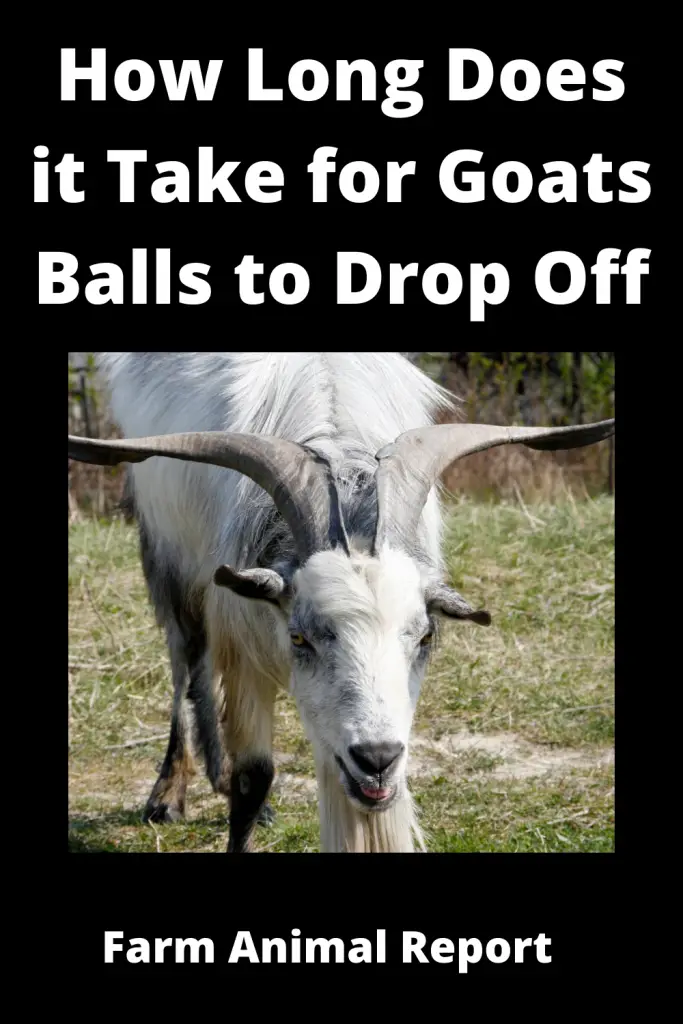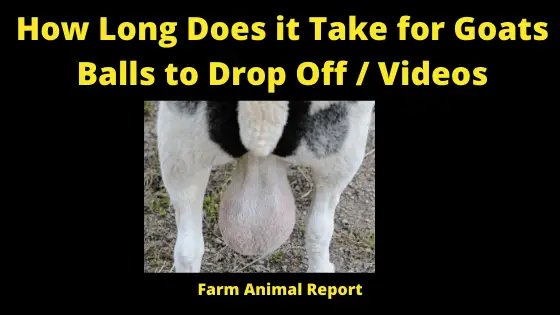Stages of Banding Goats? – How to Band a Goat
As a general rule banding a goat, Elastration , Wether, Elastration is a bloodless method of castrating goats. Elastration is simply banding the body part( scrotum) until it drops off. The band cuts off circulation to the balls. In a few weeks, the balls shrivel and within 6-8 weeks, the shriveled sack and balls fall off with the band. Elastration is the most common method used to castrate sheep and goats
Elastration / Goat Banding / Neutering / 2 Months
How Long Does it Take for Goats Balls to Drop Off – Elastration is a bloodless method of castrating goats. Elastration is simply banding the body part( scrotum) until it drops off. Stages of Banding Goats
The band cuts off circulation to the balls. In a few weeks, the balls shrivel and within 6-8 weeks, the shriveled sack and balls fall off with the band. Elastration is the most common method used to castrate sheep and goats.
See Amazons Resources on the Science of Raising Goats
Banding Procedure – Castration
Elastration involves restraining the animal, without the need for anesthesia or sedation (unlike most other castration methods), in a position that provides access to the genitals. Special elastrator pliers are then used to place a tight latex (rubber) elastrator ring gently around the base of the sac. How to Band a Goat
Banding a goat – This cuts the blood supply to the sac and balls, which will totally decay and slough off within a few weeks. Care must be taken during the procedure to ensure that both balls are fully descended and properly located inside the sac and that the animal’s nipples are not included within the ring.

Elastration is normally limited to castrations done during the first few weeks of life, and it cannot be used for species where the sac does not have a narrow base.
It is commonly recommended to not use this method on goats until they are 8 weeks or older.
This is due to possible complications that could occur later in life like urinary calculi. Goats that are banded during the first month of age are most at risk.
Banding Advantages
The procedure is relatively simple, which makes it easier for the novice to learn. Since the skin is not broken, there is no bleeding. One person can (but with some difficulty) perform the operation alone. If a band accidentally ends up in the wrong place it can usually be removed (if done quickly).
See Our Guide – 8 Ways to Make Money from Goat Farming
Banding Disadvantages
There is considerable pain which lasts for about an hour. The kid will frequently lie on his side with his legs stretched out and act like he’s about to depart this earthly toil. (If so, just get him up and make him walk around a little.) Others will show no problems whatsoever.
The younger they are done (and the smaller the ball), the easier it is on them. The biggest problem is that an open sore can occur along the abdomen before the balls fall off.
If it occurs, this is an area of serious potential infection, including tetanus. In a few very rare instances, the vessels going to the sac can herniate and separate from the abdominal wall causing a real scary-looking mess.

How – The Art of Banding
First, of course, you have to buy a pair of elastrator pliers. Do not try to make some homespun sort of device or buy one of those cheap ring things that are promoted as the latest thing inhumane or bloodless castration.
Get some real elastrator pliers and a package of little green bands (lamb size, not cattle). Have handy an iodine dispenser and a pair of small sharp pointed scissors (in case you want to remove the band; generally, it’s a whole lot easier to do it right the first time).
You can have someone hold the kid in their lap. Some prefer to have the kid standing so the balls drop naturally.
Examine the scrotum to see how easily the testicles can be forced down into the sack and held there. It may take some firm pressure applied to the lower abdomen to make them become available.
Do this a couple of times to make sure that in the heat of battle you can do it rapidly and with only one hand. If you cannot force the balls out of the abdomen (it may take a little practice) it may indicate that you need to wait a few days and try again.
Before you make this decision, place the kid in a standing position on all four feet and try again (you may have to stand on your head to do this!) Once you’ve determined that you will be able to proceed, make sure that your partner, the kid and you are all nice and comfortable.
Paint around the whole area (360 degrees) just above the testicle with a 7% tincture of iodine. Then place one band on the elastrator. Grip it firmly with your preferred hand and with the prongs pointing up and your hand pointing down.
Squeeze it a couple of times to make sure the band ( thick rubber band ) isn’t going to pop off and fly across the room. (Have the band about halfway down the prongs.) Grab the skin of the very bottom of the sac (NOT the balls) with the other hand and pull this through the band.
You have now reached the point where if you let go, he will experience pain and you will have a hard time retreating. Move the band (by means of the elastrator) up and over the balls while expanding the band about as far as possible.
When the band is near the abdomen and above the testicles or where the testicles should be, the real serious part of the program begins. If the balls are above the band, you will have to lower the testicles below it by forcing them out of the abdomen with your free hand as we practiced earlier. It may take a few tries to do this but keep squeezing the handle all the time.

If you find that you cannot get the testicles below the band, withdraw the elastrator and decide whether to rest and try again or come back another day. Do not put the band on the sack with one or more of the balls up in the abdomen unless you wish to intentionally create a cryptorchid male (will have all-male characteristics but be sterile.)
Once the testicles are safely below the band, squeeze off the upper sack above the band with your free hand so they cannot slip back up in. With the elastrator, position the band so that it is down almost tight against the top of the testicles.
If it is positioned too far up against the belly a serious rupture can occur; also, it tends to be more stressful to the animal later on.
Every 2 or 3 days, check the wound and put iodine on it to prevent infection. The sack will start to shrink and dry up in a few days and eventually fall off.
Possible Banding Complications
There is some evidence that elastration is more painful if carried out on older animals, although much of the immediate pain of application can be prevented by injection of local anesthesia into the scrotal neck and balls.
Practitioners usually try to elastrate as soon as possible, once the testicles have descended, to reduce the amount of dead tissue, infection, and accompanying complications. However, with some animals such as goats, castrating too early increases the frequency of kidney stones and urinary problems due to the reduced size of the urethra, so elastration may be postponed.
Signs of Complications -Banding Goats
Observe the goat for signs of complications. Some goats will cry, some will thrash and roll, some will sleep. Some will show no symptoms at all and resume regular activities. It is important that you observe urination, to ensure that the urethra was not compromised.
Some will walk with an odd gait for a day or so, or lie in place. Slight swelling is normal. If you observe significant swelling above or below the band, surgical castration may be needed. This can indicate that there is not enough pressure in the band to constrict, and blood is filling the scrotum, or a possible scrotal hernia if intestines became involved.
Consult a veterinarian. Signs of infection are redness, odor, or discharge.
Take the goat’s temperature; a course of antibiotics may be indicated.
In a proper banding, the testicles will become hard and shrink, as will the scrotum, until it is flat and leathery. Inspect the banding site from time to time to ensure that all is well. Within two months, it should naturally detach from the body.
Goat Breeds
| Goat Breeds | Meat | Dairy | Wool | |
|---|---|---|---|---|
| Boer | Alpine | Angora | ||
| Genemaster | Lamancha | Cashmere | ||
| Kiko | Nigerian Dwarf | Pygora | ||
| Kinder | Nubian | |||
| Myotonic | Oberhasil | |||
| Pygmy | Saaneen | |||
| Savanna | Sable | |||
| Spanish | Toggenburg | |||
| Tennessee Meat Goat | ||||
| TexMaster |
Goat Breeder Associations
| Goat Association | Location | Link |
|---|---|---|
| American Goat Breeders Association | United States | AGF |
| English Goat Breeders Association | UK | EGBA |
| Canadian Meat Goat Association | Canada | CMG |
| Minature Goat Breeders Association | Australia | MGBA |
| Boer Goats | South Africa | BGSA |
| American Boer Goat Association | United States | ABGA |
| World Goat Breeders Associations | List | WGBA |





